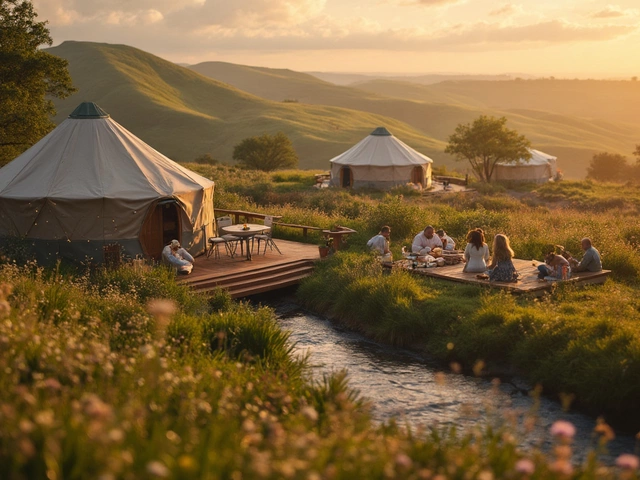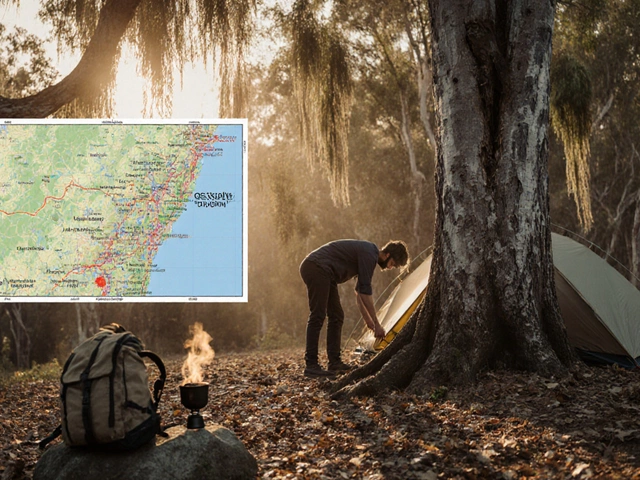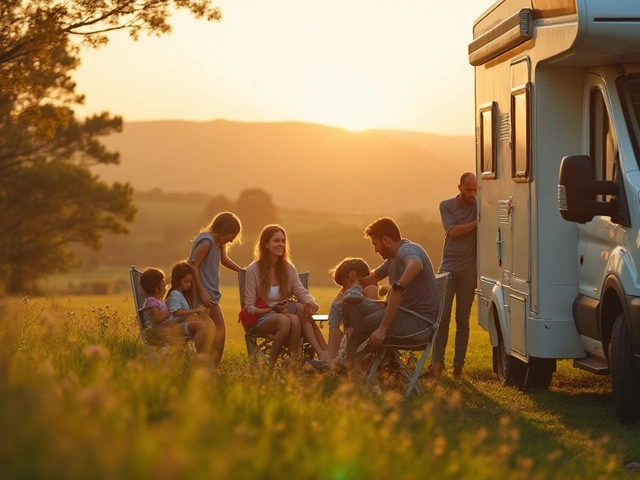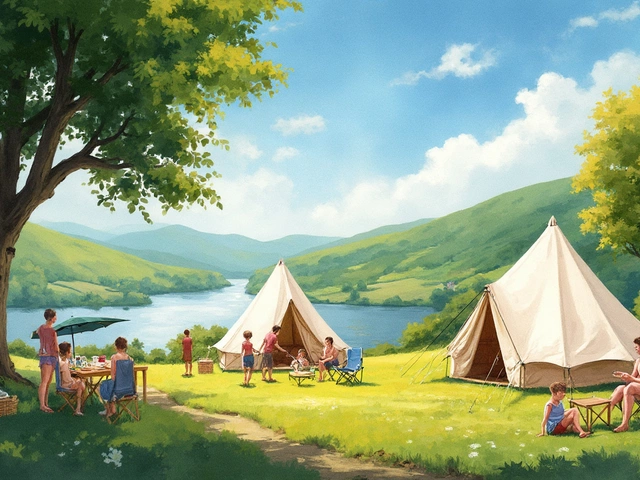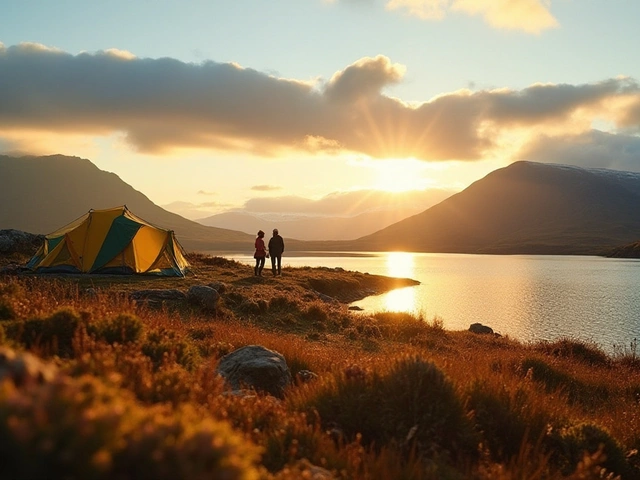Thinking about pitching a tent by yourself? You’re not alone - many campers love the freedom of solo trips, but the big question is whether it’s safe. This guide breaks down the real risks, shows you how to prepare, and gives practical steps so you can enjoy a night under the stars without fearing the dark.
What "Solo Camping" Really Means
Solo camping is a type of outdoor recreation where an individual sets up camp without companions, relying on personal skills and preparation to stay safe and comfortable. It can happen at a staffed campground, a remote wilderness area, or anywhere in between. The appeal is clear: flexibility, solitude, and the chance to connect deeply with nature. But the lack of a backup buddy also means you need a solid plan.
Assessing the Safety of Your Chosen Campsite
Not all campsites are created equal. Before you book or drive up, ask yourself these four questions:
- Is the site staffed or monitored by park rangers? Staffed sites usually have regular patrols, better lighting, and a clear emergency contact number.
- What wildlife is common in the area? Understanding local wildlife encounters helps you pack the right deterrents and store food safely.
- How isolated is the location? Remote spots may lack cell coverage, making emergency communication devices a must.
- What are the terrain and weather patterns? Knowing if the ground is prone to flooding or if the area experiences sudden storms lets you pick the right gear and set up in a safe spot.
Key Gear for a Safe Solo Night
When you’re alone, every piece of equipment either protects you or becomes a liability. Here’s a checklist that covers the basics and a few extra safety boosters:
- Personal safety gear: a compact self‑defense tool (pepper spray or a sturdy whistle) and a reliable flashlight with extra batteries.
- First aid kit: include bandages, antiseptic wipes, tweezers, blister treatment, and any personal medication.
- Emergency communication device: a satellite messenger or a personal locator beacon (PLB) if cell service is spotty.
- Food storage containers that are animal‑proof - especially important in areas known for bears or possums.
- A sturdy, weather‑rated tent with proper stakes and a ground tarp to prevent water ingress.
- Map, compass, and a small headlamp for nighttime navigation.
Preparing an Emergency Plan
Even the best prep can’t cover every scenario, so having a clear plan saves precious minutes. Follow these steps:
- Share your itinerary with a trusted friend or family member: site name, arrival time, expected departure, and any alternate routes.
- Program the exact location into your phone’s GPS and write it down on paper as a backup.
- Know the nearest medical facility and the quickest way to get there, even if it means a long hike.
- Test your emergency communication device before you leave - a quick signal check can reveal battery or signal issues.
- Establish a “check‑in” schedule: send a text or signal at set intervals. If you miss a check‑in, your contact knows to raise the alarm.

Managing Wildlife Encounters
Animals are a major concern for solo campers, especially in forested or coastal sites. Here’s how to minimize risk:
- Store food in sealed containers and keep them away from the sleeping area. Many campsites provide bear‑proof lockers - use them if available.
- Maintain a clean campsite: dispose of food scraps in designated bins and clean cooking utensils promptly.
- If you hear wildlife, stay calm. Most animals are curious rather than aggressive. Make yourself appear larger, speak in a firm voice, and slowly back away.
- Carry a deterrent like a whistle or a bear spray (if legal in the region). Know how to use it before you need it.
Nighttime Safety and Light Management
Darkness amplifies fear and risk. A simple lighting strategy can keep you safe and comfortable:
- Set up a perimeter light: a battery‑powered lantern placed near the tent entrance warns off curious critters and signals any late‑night visitors.
- Keep a headlamp on hand for quick trips to the bathroom or water source - hands‑free and directed only where you need it.
- Dim the main camp light after you settle in to avoid attracting insects and wildlife.
- Consider a small solar‑powered light that recharges during the day, reducing the need for spare batteries.
Physical and Mental Preparedness
Solo camping isn’t just a physical test; it’s a mental one too. Here are tips to keep both in shape:
- Practice setting up your tent and gear at home. Muscle memory makes the process faster and less stressful when you’re alone.
- Do a short solo night stay at a familiar, low‑risk campsite before attempting a remote location.
- Stay hydrated and eat regularly - low blood sugar can make anxiety worse.
- Use relaxation techniques like deep breathing or a brief meditation before bed to calm the mind.

Comparing Safety Levels of Different Campsite Types
| Site Type | Staff Presence | Cell Coverage | Common Wildlife | Typical Risk Level |
|---|---|---|---|---|
| Staffed Campground | Yes (rangers, reception) | Good | Deer, small mammals | Low |
| Remote Wilderness | No | Poor or none | Bear, mountain lion, snakes | High |
| Beach Campsite | Varies | Variable | Seagulls, crabs, occasional sharks | Medium |
| Forest Site | Usually none | Moderate | Foxes, possums, snakes | Medium |
Choosing a site that matches your skill level and the safety tools you bring is the smartest way to reduce risk.
When to Cancel or Relocate Your Solo Trip
Even with the best prep, some signs tell you it’s time to back out:
- Severe weather warnings (e.g., flash floods, extreme winds).
- Unexpected wildlife activity near the site (e.g., many animals gathering).
- Malfunctioning emergency communication device.
- Feeling unusually anxious or unsafe during a site walk‑through.
It’s always better to lose a night’s plan than to risk injury or a dangerous encounter.
Bottom Line: Is Solo Camping Safe?
Yes, solo camping can be safe - as long as you treat it like any other adventure: plan ahead, bring the right gear, and stay aware of your surroundings. By following the steps above, you’ll be equipped to handle most challenges and enjoy the peace that only a night alone in nature can bring.
Can I camp alone in a national park?
Yes, many national parks allow solo campers, but you must register at the ranger station, follow specific fire rules, and carry a reliable emergency communicator because cell service can be limited.
What is the most important piece of gear for solo camping?
A personal locator beacon (PLB) or satellite messenger tops the list - it lets rescuers find you even when there’s no phone signal.
How do I store food safely at a campsite?
Use bear‑proof containers or lockers, keep food sealed, and never leave scraps in your tent. Hang food from a tree branch if lockers aren’t available, using a 12‑foot line to stay out of reach of most animals.
What should I do if I encounter a dangerous animal?
Stay calm, back away slowly, make yourself look larger, and use your deterrent (whistle, pepper spray) if the animal approaches. Never run, as it may trigger a chase response.
Is it okay to camp alone if I’m new to camping?
Start with a low‑risk, staffed campsite and do a short solo night before tackling more remote sites. Build confidence gradually.


